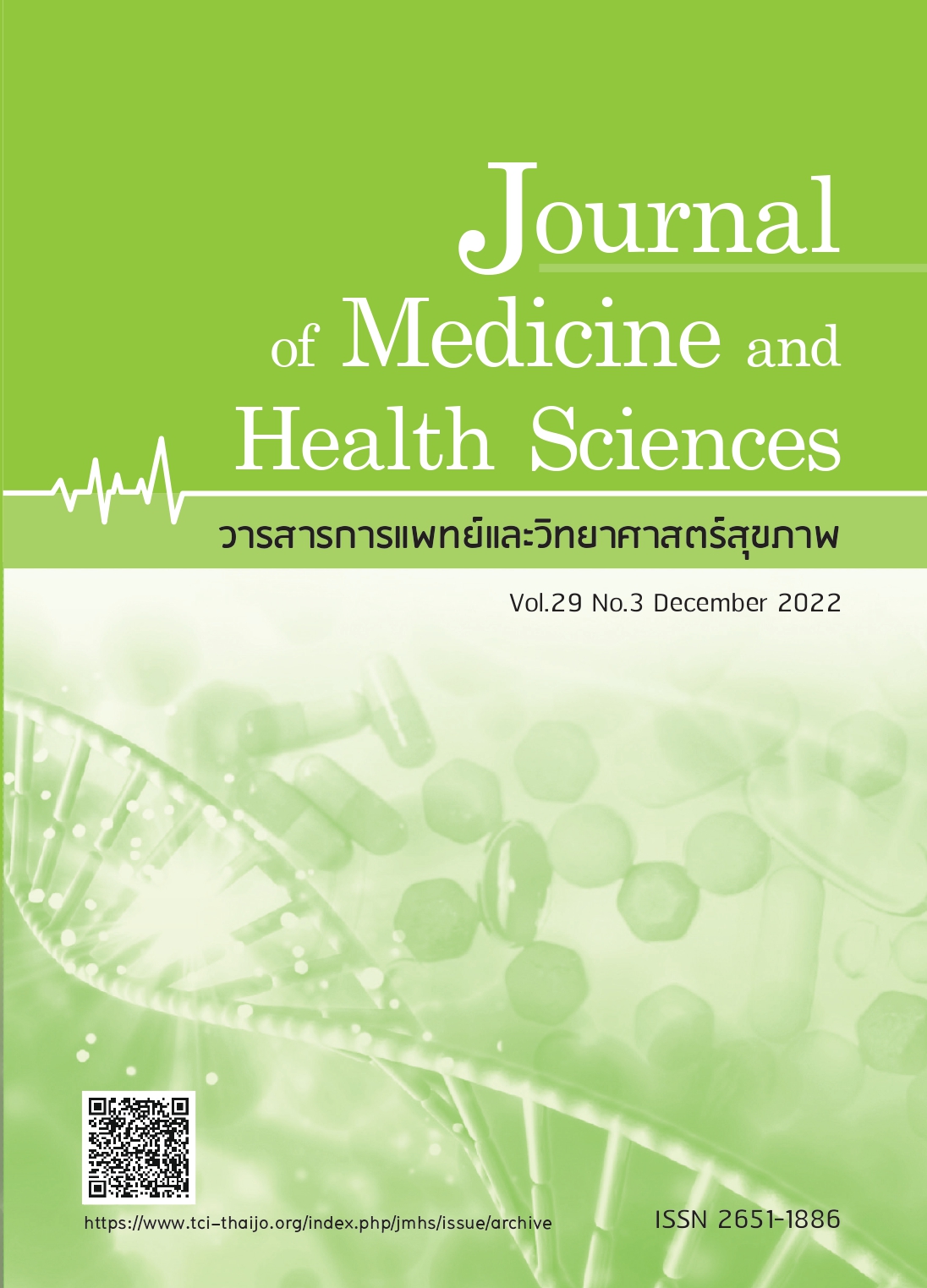Associated computed tomographic features and quantitative measurement of ruptured hepatocellular carcinoma
Keywords:
Ruptured hepatocellular carcinoma (HCC), Computed tomographic (CT) features of ruptured HCC, Quantitative measurement of ruptured HCCAbstract
Abstract
Ruptured hepatocellular carcinoma (HCC) is a life-threatening complication. The Computed Tomographic (CT) features of ruptured HCC confirmed the diagnosis of a peripherally located tumor with a contour bulge. The associated CT features and quantitative measurement are poorly understood. The assessment of the associated features of ruptured HCC may improve an accurate diagnosis, prognostic understanding, and treatment procedures. The associated CT features and quantitative measurement of ruptured HCC were retrospectively evaluated to improve accurate diagnosis and prognostic evaluation. The case group of 53 patients with ruptured HCC and the control group of 94 randomly selected HCC patients without ruptured tumors was clinically reviewed. The maximal tumor dimension, area, volume, protrusion length and height were greater in the rupture group, with the protrusion ratio and CT attenuation significantly lower. Tumor protrusion, extrahepatic invasion, metastasis, abnormal vascularity, ascites, necrosis and tumor thrombus were also significantly higher in the rupture group. Among the parameters, the protrusion height showed the highest association. Multivariable analysis determined that maximal tumor dimension and tumor protrusion were independently associated with ruptured HCC. Tumor protrusion showed the best correlation. Maximal tumor dimension at a cut-off value of 6.3 cm gave optimal sensitivity (88.7%) and specificity (73.4%). Maximal tumor dimension and tumor protrusion were independently associated with ruptured HCC. The maximal tumor dimension exceeded 6.3 cm and tumor protrusion height of more than 3 cm were suggestive of imminent HCC rupture.
References
Abdalla EK, Stuart KE. Overview of treatment approaches for hepatocellular carcinoma [Internet]. UpToDate. [cited 2020Oct18]. Available from: https://www.uptodate.com/contents/overview-of-treatment-approaches-for-hepatocellular-carcinoma
Torre LA, Bray F, Siegel RL, et al. Global cancer statistics, 2012: Global Cancer Statistics, 2012. CA Cancer J Clin 2015;65(2):87–108.
Somboon K, Siramolpiwat S, Vilaichone R-K. Epidemiology and survival of hepatocellular carcinoma in the central region of Thailand. Asian Pac J Cancer Prev 2014;15(8):3567–70.
Lai ECH, Lau WY. Spontaneous rupture of hepatocellular carcinoma: a systematic review: A systematic review. Arch Surg 2006;141(2):191–8.
Zhu Q, Li J, Yan JJ, et al. Predictors and clinical outcomes for spontaneous rupture of hepatocellular carcinoma. World J Gastroenterol 2012;18(48):7302.
Sahu SK, Chawla YK, Dhiman RK, et al. Rupture of Hepatocellular Carcinoma: A review of literature. J Clin Exp Hepatol 2019;9(2):245–56.
Singhal M, Sinha U, Kalra N, et al. Enucleation sign: A computed tomographic appearance of ruptured hepatocellular carcinoma. J Clin Exp Hepatol 2016;6(4):335–6.
Choi J-Y, Lee J-M, Sirlin CB. CT and mr imaging diagnosis and staging of hepatocellular carcinoma: Part I. development, growth, and spread: Key Pathologic and imaging aspects. Radiology 2014;272(3):635–54.
Santillan C. CT and MRI of the liver for hepatocellular carcinoma. Hepatoma Res 2020;6:63.
Kim HC, Yang DM, Jin W, et al. The various manifestations of ruptured hepatocellular carcinoma: CT imaging findings. Abdom Imaging 2008;33(6):633–42.
Kanematsu M, Imaeda T, Yamawaki Y, et al. Rupture of hepatocellular carcinoma: predictive value of CT findings. AJR Am J Roentgenol 1992;158(6):1247–50.
Kashkoush S, El Moghazy W, Kawahara T, et al. Three-dimensional tumor volume and serum alpha-fetoprotein are predictors of hepatocellular carcinoma recurrence after liver transplantation: refined selection criteria. Clin Transplant 2014;28(6):728–36.
Xia F, Ndhlovu E, Zhang M, et al. Ruptured hepatocellular carcinoma: Current status of research. Front Oncol 2022;12.
Kerdsuknirun J, Vilaichone V, Vilaichone R-K. Risk factors and prognosis of spontaneously ruptured hepatocellular carcinoma in Thailand. Asian Pac J Cancer Prev 2018;19(12):3629–34.
Choi BG, Park SH, Byun JY, et al. The findings of ruptured hepatocellular carcinoma on helical CT. Br J Radiol 2001;74(878):142–6.
Trevisani F, Cantarini MC, Wands JR, et al. Recent advances in the natural history of hepatocellular carcinoma. Carcinogenesis 2008;29(7):1299–305.
Downloads
Published
How to Cite
Issue
Section
License

This work is licensed under a Creative Commons Attribution-NonCommercial-NoDerivatives 4.0 International License.



